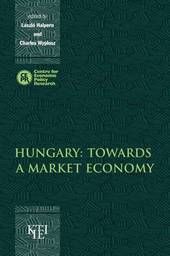
|
Hungary: Towards a Market Economy
Paperback / softback
Main Details
| Title |
Hungary: Towards a Market Economy
|
| Authors and Contributors |
Edited by Laszlo Halpern
|
|
Edited by Charles Wyplosz
|
| Physical Properties |
| Format:Paperback / softback | | Pages:412 | | Dimensions(mm): Height 229,Width 152 |
|
| Category/Genre | Economic systems and structures |
|---|
| ISBN/Barcode |
9780521142700
|
| Classifications | Dewey:330.9439 |
|---|
| Audience | | Postgraduate, Research & Scholarly | |
|---|
| Illustrations |
Worked examples or Exercises
|
|
Publishing Details |
| Publisher |
Cambridge University Press
|
| Imprint |
Cambridge University Press
|
| Publication Date |
3 February 2011 |
| Publication Country |
United Kingdom
|
Description
Hungary: Towards a Market Economy, first published in 1998, offers a comprehensive assessment of the Hungarian economy, and follows its evolution in the immediate aftermath of the revolutions in Central and Eastern Europe. Part I describes the macroeconomy, the evolution of monetary policy, the link between the exchange rate and inflation, the inability of fiscal policy to come to terms with public debt and deficits and the evolution of the underground economy. Part II focuses on the microeconomy; the consolidation of the banking sector, the evolution of corporate governance and an analysis of the profitability of export-orientated firms. The final part assesses the labour market and the system of welfare. Hungary: Towards a Market Economy is part of the successful sequence of volumes on major topics in international economics published under the auspices of the Centre for Economic Policy Research, of interest to both policy-makers and specialists.
ReviewsReview of the hardback: 'The work of Halpern and Wyplosz is a useful contribution to the literature on transitional economics. It provides carefully researched and detailed evidence of economic change. It also contains very interesting commentaries on each chapter by other economists. These, together with the introductory chapter, will be particularly helpful for the lay reader in understanding what they call the hidden Hungarian miracle.' The Times Higher
|